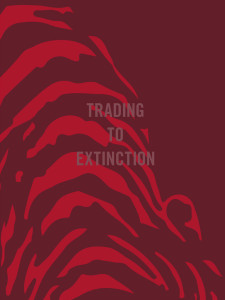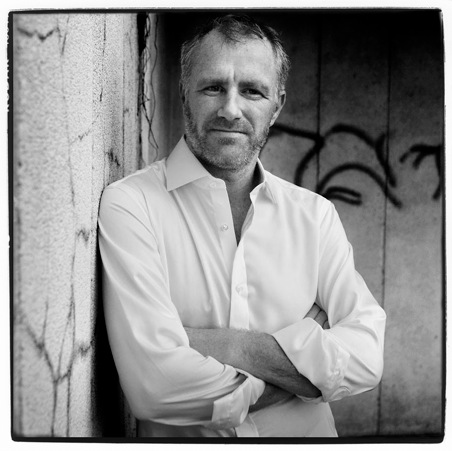In 2007, we followed photojournalist Patrick Brown into the vast, dangerous world of Asia’s wild animal market in Black Market. At the time some 30,000 primates, up to five million birds, and ten million reptile skins were a part of the third-largest smuggling operation in the world. Seven years later, illegal wildlife trading is still a global issue, raking in $19 billion a year from the trafficking of endangered animals.
This month David Cameron will host the highest level global summit to date on combating the illegal wildlife trade in London. Heads of state will discuss quelling wildlife poaching, highlighting the strong links between the illegal industry and international criminal syndicates, terrorism and threats to national security.
Few are familiar with just how high the stakes are as Patrick Brown. He has photographed the illegal trade of endangered animals in Asia for more than a decade, covering its dealers, stockpiles, trafficking routes and markets. The culmination of his work, Trading to Extinction, is fittingly timed with the issue taking the world stage.

MediaStorm: How were you introduced to the issue of illegal wildlife trading?
Brown: I was introduced to the issue by Ben Davies and Adam Oswell, who asked me to be the photographer on a book project, called Black Market, about the illegal animal trade. Once the shooting was completed I realized that I only just started to scratch the surface of this subject.
I started to put all the links together, the connectivity of different issues within one subject and the global landscape of the trade. This trade is bigger than most, and the complexity – to be honest – is at times overwhelming, but mostly intriguing and really interesting.
MediaStorm: What about this issue has kept your attention for so long?
Brown: I am quite a dogmatic and stubborn character, and it wasn’t until recently that I felt I wasn’t shooting new material. This is when I realized I’d reached a saturation point, and I felt I pushed it as far as I could, and managed to expose what I set out to do from the beginning. When I started the project, it was an unknown entity and I had to find out how far I could go as an individual within those parameters.
MediaStorm: How were you able to gain access to such a guarded world?
Brown: For most of the images I’ve shot on this project, I went undercover to find out what the real story was and get the truth about what was going on behind the curtains. It was not easy convincing the shop owners and dealers that I was not a threat. I had to pretend that I was interested in buying or simply agree to a trade and by doing so uncovered the unseen evidence and the atrocities of the trade. Of course this came with a price, but I was able to justify it by looking at the bigger picture, to get the story out by showing the world the cruel aspects of this trade and the social, cultural, financial and political complexities that lies behind the fight to save our endangered species. I bought only fake things – tiger claws in Southern China for example, which made me look dumb to traders and less of a threat.
Access now has become even harder because of the internet. People know the power of an image because of the internet. Even in the most remote areas people know to some degree that an image can be seen around the world, which makes them more cautious about being caught on camera.
MediaStorm: How does it feel to see wildlife trading and poaching taking the world stage at the London summit? What do you hope to see accomplished?
Brown: We have to be realistic. The war on drugs didn’t work; it just pushed up the price of drugs. I am afraid that this could happen again, only now for the illegal trade on wildlife.
In my view I feel you need to have a global education campaign about the mythology behind the trade. I would like to see government, NGO and scientists not arguing about money, but working as one – a system such as Interpol. There should be a law enforcement unit where they work together on catching the criminals and sharing information. We need multilateral integrated laws that are effective across the globe – because this is a global trade. A Spaniard who hunts an elephant in Africa should be prosecuted in Spain.
The only way to change the behavior around this issue is through education. And for the people at the very top of the political structure, to take it very seriously. A behavioral campaign could start by focusing on the villages and communities that surround the national parks where most of animals survive, right through to the major cities of the world. It needs to be done in such a way that it is not condescending of their cultures and their beliefs, but instead showing other alternatives to sustain their living. I’m referring to people that are connected to the animals and the forest, and whose lifestyle is dependent on that. And for the major cities, it is the consumers that need to know that the product doesn’t carry any mythical powers, backed up with scientific evidence and the cruel reality of the trade.
MediaStorm: What are common misunderstandings or misconceptions you’ve noticed the general public holds about poaching and wildlife trafficking?
Brown: People are becoming more and more aware of the issue, however many people still don’t understand how big the trade is. It is among the top five illicit trades in the world.
Another issue is ignorance of the trade. Many people do not see themselves as part of the cycle, however, the mere conception of the animals as commodities and entertainment, are also major forces keeping the trade alive, justifying maltreatment and lack of empathy for the suffering imposed by mankind.
MediaStorm: What complexities has your coverage of this topic uncovered?
Brown: For me it is not about the animals, but about the subcultures that surrounds the illegal animal trade. I am not a wildlife photographer, but a documentary photographer covering social issues around the world. It is a multifaceted, multilayered subject: the animals, the poachers, the smugglers, the anti-poaching units, the conservation efforts, the environmental issues, the buyers, the law enforcement – which makes it into a multinational issue.
It is also a very difficult subject politically, since even the NGO’s and the governments are all fighting for funding and the power to define the subject and to decide what they consider the most important aspect of the issue or the most endangered species. They are fighting amongst each other, and in some ways they have become part of the hunt for the most endangered species.
And the scientists are the ones with the knowledge about the real issues and how to tackle it, however, they are all so specialized and only deal with one species for 20 years, making it difficult to sum up a joint knowledge of how to deal with this subject in a common and united approach.

MediaStorm: It’s been a long journey to having your book available to the public. What lessons did you learn going through the process of having your book published?
Brown: I’ve learned a lot. And sadly I learned the hard way on possibly the most precious subject of my career. As most people are aware of by now, I raised $29,000 through Emphas.is crowdfunding publishing model. However, this turned out to be a very unfortunate partnership, when Emphas.is went into liquidation in October 2013 and took with them all the money raised. Leaving me with the bills to be paid on services that had already been provided. I am in a $29,000 debt due to somebody else’s mismanagement. This is a tough lesson learned. This has also meant that I’ve basically been managing the entire book production, which is a very time consuming business. The good thing is that I’ve gained valuable experience in what goes into a book, from editing, sequencing, design, pre-press right until the final product. However, one thing I would recommend to anybody doing a book is that you get a book designer with experience, and not a graphic designer, there’s a big difference. I’ve been very lucky in this regard, by working with one of the best book designers in the business, Stuart Smith. Stuart has been a great support through these troubled waters.
And in the end I made a partnership with a publisher that truly understands the value of this work, and has distribution and a track record of publishing highly acclaimed photographic books: Dewi Lewis Publishing.
MediaStorm: For those that have followed your work, what new insights does your book Trading to Extinction bring?
Brown: My project was always originally designed to be a book, not a magazine or newspaper article, only focusing on one or two issues of the trade. For the first time you will see the full body of work as it was meant to be seen, in all its different aspects and complexities.
Due to the limitations of numbers of pages and the size of the print run, only a limited audience will be able to obtain the book, and it still does not show the entirety of 10 years of work. I am currently sharing images from the book as well as images that have never been seen before on my Instagram page, one new image a day for a whole year.
To change public opinion is a numbers game. The numbers and the voters of tomorrow are online looking into their smart phones right now. I believe in taking the message to them directly and as efficiently as possible.
You can make a difference in illegal wildlife trading by voting for politicians who are visibly active in making a difference on the subject of illegal animal trade, supporting projects working in the field of conservation and combating illegal animal trading, and being aware of how trade manifests in your city and avoiding in any activity that could encourage it.
Follow Patrick on Instagram and his website.
Visit Dewi Lewis Publishing to order the book, Trading to Extinction.

